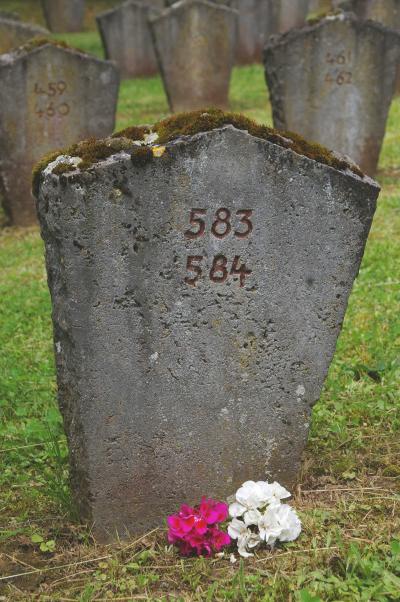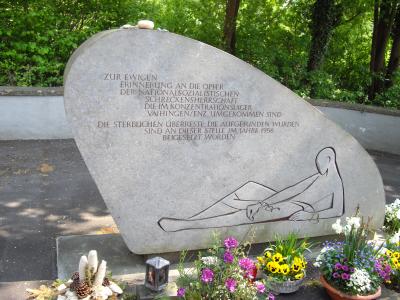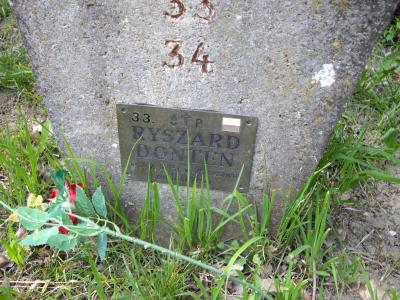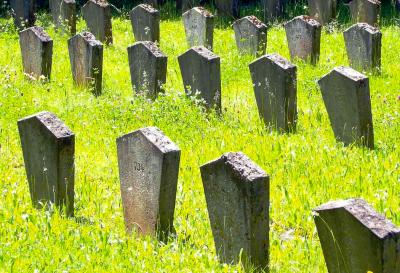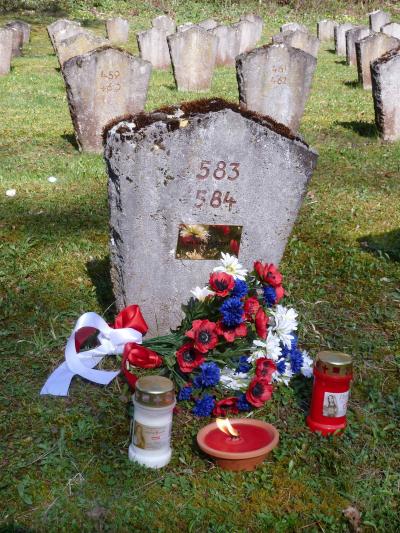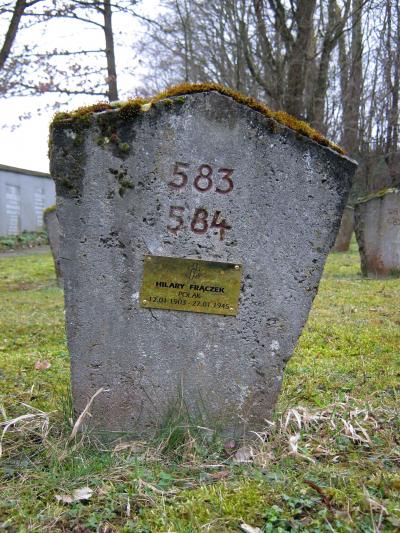KZ Vaihingen
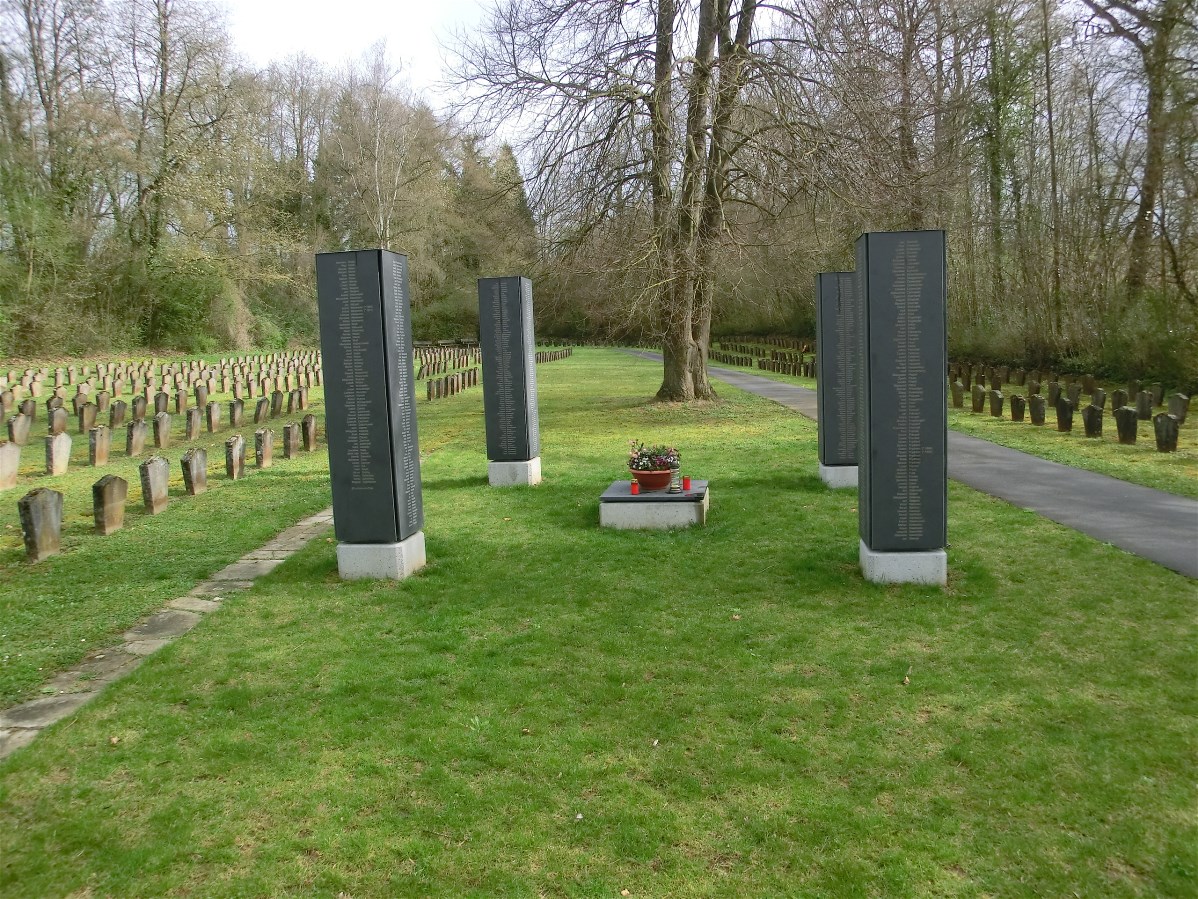
On the 11th of August 1944, 2,189 prisoners from the ghetto in Radom, which was closed on the 24th of July 1944, arrived at the camp. The two-shift 12-hour murderous work seven days a week on the construction of the underground factory claimed 133 victims from that transport. The deceased were laid in the camp cemetery. At the end of October the construction works were interrupted due to continuous bombings by the Allied air force. This, however, did not mean that the Vaihingen sub-camp was closed. The Natzweiler concentration camp commanding officer decided to create a special camp for the sick and dying from all the sub-camps. In order to keep the purpose of this camp secret, an additional track was built, hidden from the eyes of local residents, running from the quarry to the camp gate. It was used to transport sick or exhausted prisoners, and often also those who died during transport. The platforms with those prisoners were pushed along the tracks by those who still had the strength to do so.
Later on, an additional barrack for the sick was built - the only one with running water. From January 1945, the medical staff consisted of two prisoner doctors with a minimum amount of medical supplies. The official German camp doctor did not show any interest in the situation of the sick. On the 10th of November 1944, the first transport of 500 people arrived, and by the beginning of March of the following year, 25 transports with the sick and dying were registered - they came from the KZ Nazweiler sub-camps in Heppenheim, from Frankfurt, Leonberg, Hessental, Neckargerach, Neckararelz, Mannheim-Sanhofen, Echterdingen, Wasseralfingen, Bensheim, Haifingen, Kochendorf and Haslach. 2,442 prisoners, representatives of 25 nationalities, mainly from Poland, Russia and France, were placed in five small barracks. The prisoners died deprived of basic medical supplies, of food, freezing in unheated barracks and as a result of a typhus epidemic, which was brought to the camp on the 16th of February with one of the transports. From over a dozen sub-camps 1,177 Poles were sent to KZ Vaihingen; 771 of them were buried at the camp cemetery. The last recorded transport of 94 sick prisoners, unable to continue working, came to the death camp on the 11th of March 1945 from KZ Mannheim-Sandhofen. From the Warsaw transport 154 people died, selected at KZ Dachau to work in Mannheim. They were buried at the Vaihingen camp cemetery.
In November 1946, the American military authorities handed over to the Polish state the members of the SS guard troops, who were tried in Radom after further investigations. In a separate trial that took place in Lublin, a member of the management – Möller – was sentenced to death. A further trial took place in front of the French tribunal in Rastatt, where the commander of guard troops - Lautenschlager - and 42 SS wardens from the Vaihingen, Unterriexingen, Hassental and Kochendorf sub-camps were tried. There were 10 death sentences and 8 people were found not guilty, while Lautenschlager was sentenced to life in a labour camp. In October 1945, as a result of an order of the Allied occupation authorities, a war cemetery was created on the site of mass graves of the death camp victims. In 1954 a French government commission exhumed 1,488 victims, 221 were identified and transferred to their home countries.
Today, the cemetery, established between 1956 and 1958, has 744 nameless concrete tombstones under which 1,267 victims of the Vaihingen concentration camp rest. Thanks to a social initiative, the KZ-Vaihingen/Enz e.V. association was founded in 1990. Its main goal was to create a memorial site of the former camp. In 2005, after 15 years of collecting historical information and financial resources, a memorial site was established. The society also takes care of the cemetery, where 744 tombstones with double numbers from 1 to 1,488 fulfil a symbolic role, not marking any particular grave.
